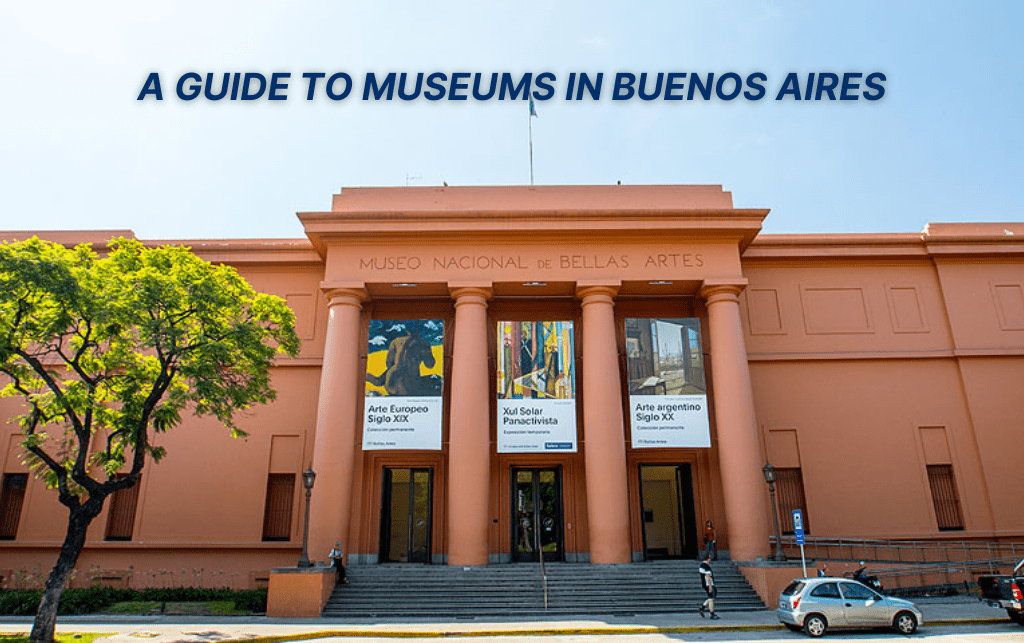We’ve made a complete guide to the best museums in Buenos Aires: how to get tickets (in some cases, for free!), where to go and what to see. Read on if you’re looking to learn more about Argentine art and exclusive collections and galleries.
Written by Carla Chinski, Content Marketing Director at Vamos Academy
An Introduction to Art and Themed Museums in Buenos Aires
Argentina has many, many Art and non-art museums full of miscellany, special collections, temporary and permanent exhibitions. If you’re lucky, you might be able to catch an international-quality exhibition in one of Buenos Aires’ local museums. All of these museums feature an excellent curation, and the criteria for curating is so diverse you won’t really know what to expect–and that’s a good thing, for sure.
Audiovisual arts, painting, sculpture and performance: you name it, it’s most likely in the city of Buenos Aires. Museums are not just museums in themselves; rather, they are cultural centers that gather different activities related to the arts. These institutions within the museums are called “amigos”, and you can become a member for a small fee.
There are lots of areas in Buenos Aires which gather, at different points, museums of different types, such as the “calle de los museos” in Avenida Libertador (Palais de Glace, Museo de Arte Decorativo, among others); San Telmo (MACBA and MAMBA, recent constructions in the neighborhood), and Palermo’s art galleries.
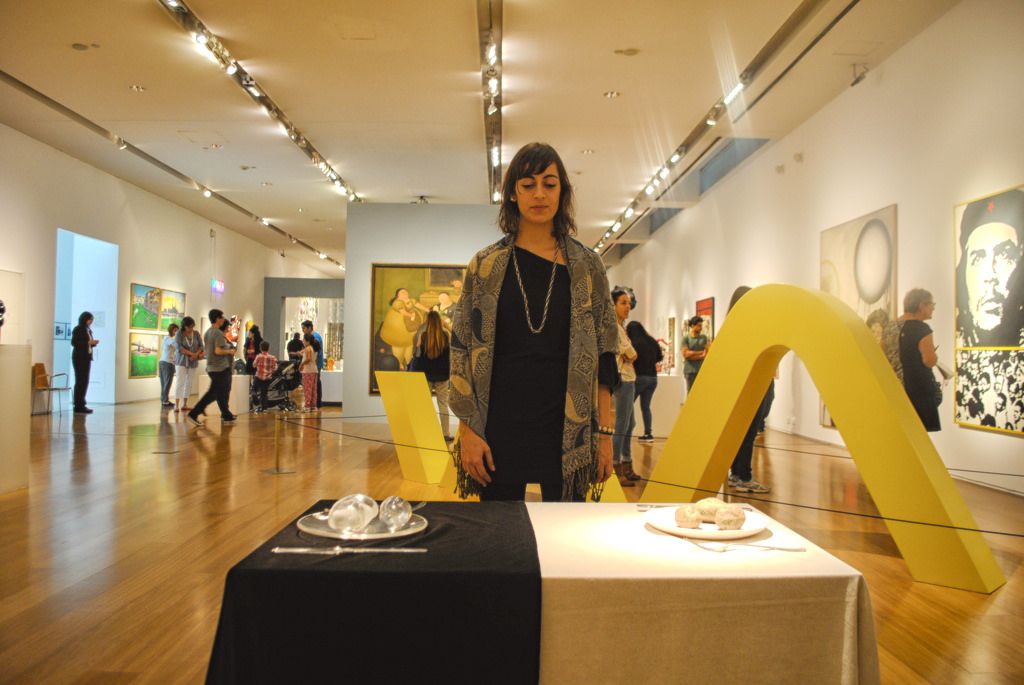
Here, we’ve compiled a comprehensive, full list so you can go visit whatever fits your fancy. You won’t be disappointed.
The Best Museums With Free Entry: A Guide
While the best-known museums here in Buenos Aires are art museums, there are many lesser-known ones that definitely merit a visit! Here’s a list of some can’t-miss museums that will give you another perspective on everything that Argentina has to offer:
Museo del Bicentenario
This museum opened just last year on May 24 to celebrate two hundred years of Argentine history (1810-2010). This museum is located in the historical military fort, el Fuerte de Buenos Aires, which was constructed during the 18th century, and the Aduana Taylor (international customs building), which was constructed in 1855. Both buildings have played a very important role in the history and development of Argentina, so you’ll be walking down the very halls where history was made! This museum features archeological artifacts, historical objects, and some works of art that are closely linked to Argentine history.
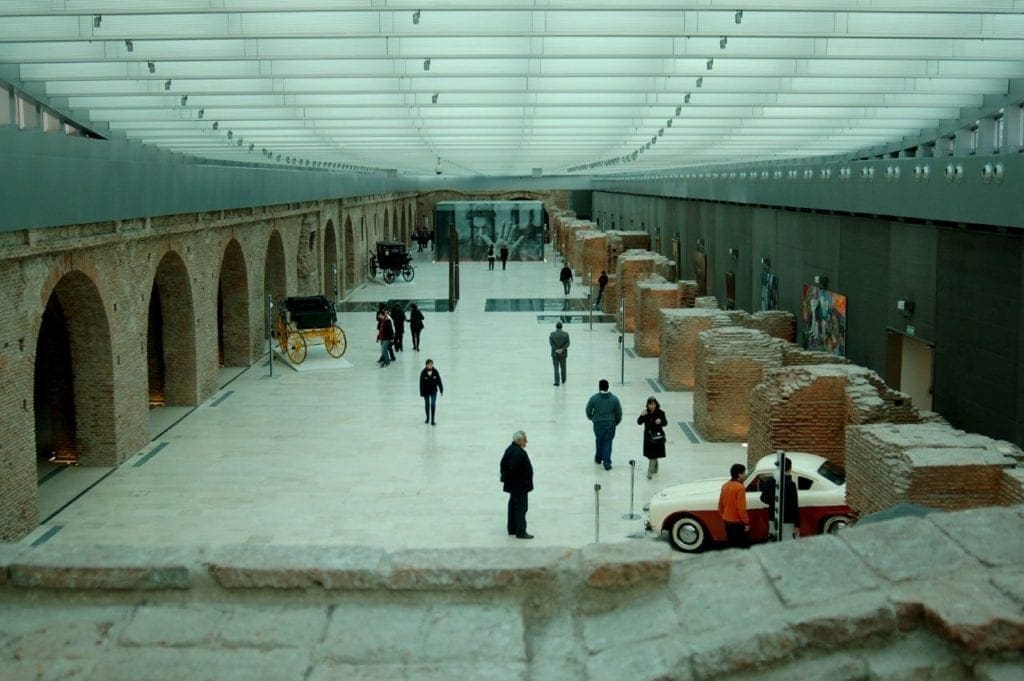
Address: Av. Hipólito Yrigoyen S/N (no street number)
Opening hours: Wednesdays to Sundays 10 AM to 6 PM
Museo Etnográfico “Juan B. Ambrosetti”
This museum is dedicated to the investigation, diffusion, and conservation of the historical and anthropological patrimony in Argentina, in particular, all of the different cultures that have contributed to make Argentines who they are today. It features archeological, ethnographical and anthropological collections of not only the aboriginal populations in Argentina, but also of other groups from other parts of the world who have influenced Argentine culture. While this museum features artifacts from Patagonia and northeastern Argentina, it also includes pieces from as far as Greece and Japan.
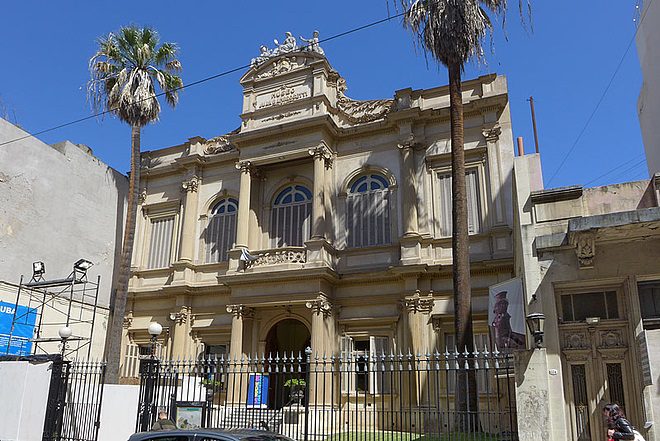
Address: Moreno 350
Operning hours: TBA
El Zanjón de Granados
This is one of the important urban archeological sites in the city. The site of the Zanjón de Granados is considered by some historians to be the site of the first settlement of Buenos Aires in 1536. The first section was discovered underneath a 19th century building, and from there other ruins of foundations, walls, floors, wells, and sewage pits were found. Recently restored to its previous glory, you can take a guided tour and hear the stories of this amazing historical site, seeing how people have lived throughout the ages in Argentina.

Museo Argentino de Ciencias Naturales
This museum explores all of the non-human aspects of Argentine history, starting millions of years ago with fossils found here under the city of Buenos Aires. It includes exhibitions on plants, animals, and marine life, from the prehistoric up through the present day.
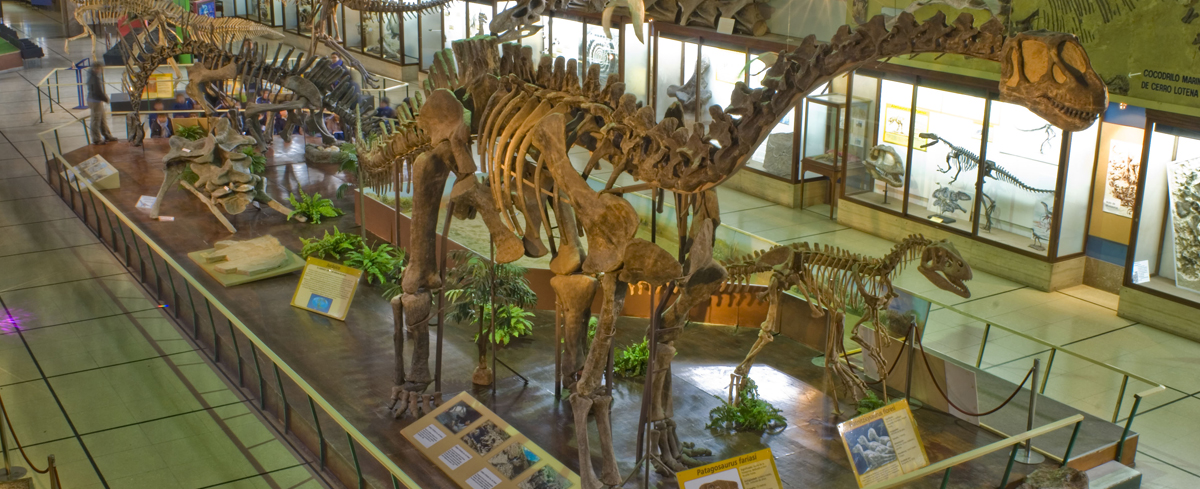
Museo Evita
This museum works to share the life, works, and ideas of María Eva Duarte de Perón – best known as Evita – and also serves to protect the legacy of some of her personal belongings.
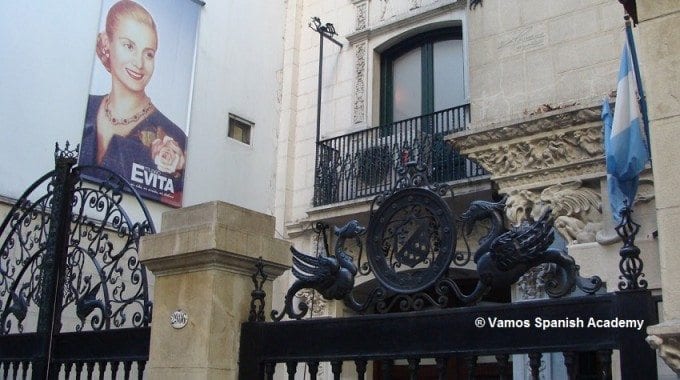
Address: Lafinur 2988
Opening hours: Thursdays through Sundays from 11 AM to 7 PM
Museo Casa “Carlos Gardel”
Curious about the tango legend? Go to his house! He bought the house in 1927 for his mother and lived there until 1933, when he left for France. The museum opened its doors in 2003 and transports its visitors to the time of Carlos Gardel. The museum examines his life through the story and history of tango throughout the world and takes a deeper look at both person and the myth.
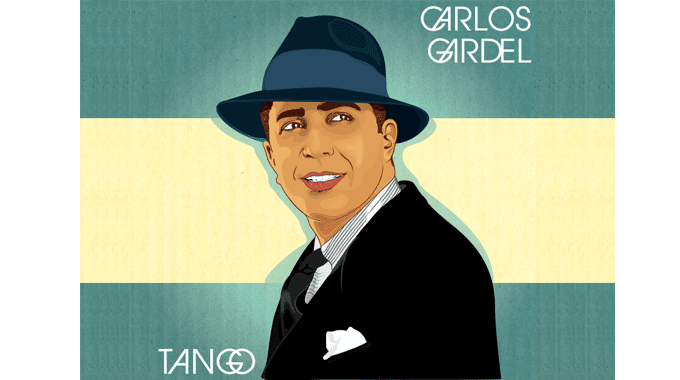
Address: Jean Jaures 735
Opening hours: All week from 11 AM to 7 PM. Tuesdays closed.
Art Museums With Paid Entry: Fees and Recommendations
Also read: Centro Cultural Recoleta – Recoleta Cultural Center
Museo Nacional de Bellas Artes: The famous museum in Buenos Aires
The MNBA (Museo Nacional de Bellas Artes) has a history that goes way back into Argentina’s colonial past. The building was first located near what is now known as Calle Florida in the late eighteen-hundreds. In 1933, the museum was relocated to where it is today, with its iconic building in Av. Libertador and Av. Pueyrredón. The museum currently hosts more than 12000 pieces hailing from different museums around the world, as well as from private collections.
It’s easy to get lost (sometimes literally) in the museum’s many exhibitions and rooms; the antique atmosphere of the place has a special quality to it, and you won’t want to miss some of the baroque decorations one can see from inside the building. Outside of the actual exhibitions you can find the typical security check, coat storage and lockers.
Most of the rooms feature paintings from the likes of Paul Gaguin, Toulouse Lautrec, Rodin–all of the old favorites that, perhaps, one wouldn’t expect when visiting a museum in Buenos Aires, right? But, apart from international artists, the museum features a great collection of local and historically relevan painters, from Prilidiano Puerredón, Cándido López, as well as some more contemporary figures like Marta Minujín. The masterworks, greatest works, private collections and temporary exhibitions make up the museum on the whole, so there’s plenty to choose from.
Museo de Arte Moderno (Modern Art Museum – MAMBA): A Modern Collection
According to the MAMBA website (and we couldn’t have said it better ourselves): “The collection of the Museo de Arte Moderno de Buenos Aires was first assembled by its original directors, Rafael Squirru, Hugo Parpagnoli and Guillermo Whitelow. It includes more than 7,000 works of modern and contemporary Argentine and international art from the twentieth and twenty-first centuries and features outstanding pieces from the 1950s – when the museum was founded – through to today, keeping in line with its mission to always remain at the forefront of the art world. It is also home to important graphic and industrial design collections”.
Its most recent is the photography collection, where you’ll be able to access photography from established Argentine photographers. If you’re researching Latin-American art, you can visit the library, which was donated from a private collection. As you might have guessed, the Museo de Arte Moderno has more of a history than other museums like the Contemporary Art Museum. Although they are right next to each other, you’ll be able to spot the differences; the MAMBA has a much more traditional façade.
Some of the exhibitions, especially the temporary ones, are more niche: for example, the museum has recently (as of 2021) featured a tribute to Argentine visual artist and cult writer from Argentina. There have also been temporary exhibits displaying works by Alberto Greco and Santiago Itaurralde.
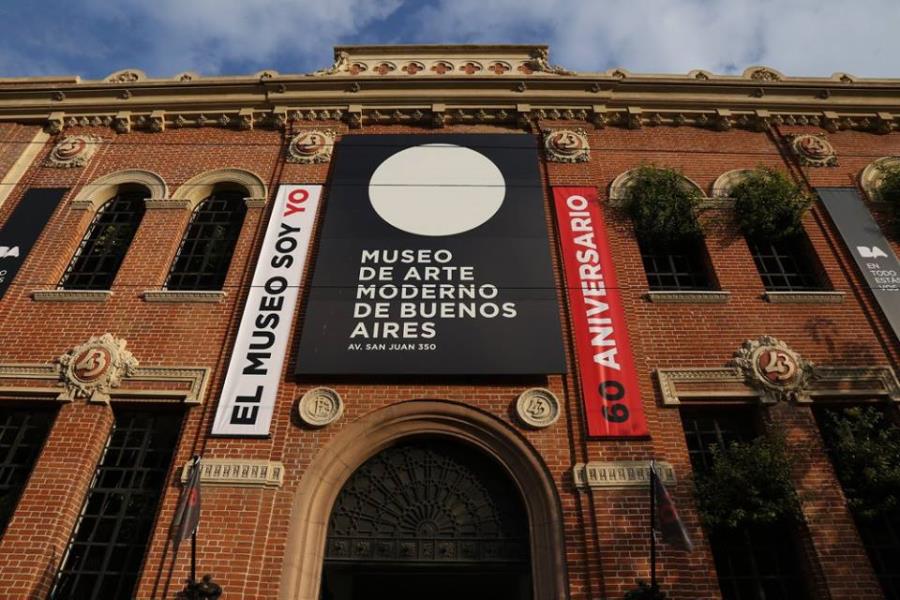
Address: Av. San Juan 350
Opening hours: Mondays, Tuesdays, Thursdays and Wednesdays (free day) from 11 AM to 7 PM; Saturdays and Sundays from 11 AM to 8 PM;
Also read: What to Do On Rainy Days in Buenos Aires
Museo de Arte Contemporáneo (Museum of Contemporary Art): An Overview of Current Artistic Tendencies in Argentina
Located between the neighborhoods of San Telmo and La Boca, their collection features more than five hundred works of art that you can also access via a digital collection. The museum itself was declared officially to be a part of the “Distrito de las Artes” (Art District).
Some of the artists featured are: Enio Iommi (1926), Gyula Kosice (1924), and Raúl Lozza (1911-2008). Other generations include: Ary Brizzi (1930), Rogelio Polesello (1939) y Alejandro Puente (1933). The art exhibited here originally belonged to the private collection of Aldo Rubino, and the creation of the MACBA represents Argentina’s colonial roots to the present day, as well as a contemporary interpretation of colonialism and the artistic tendencies and schools that came well after.
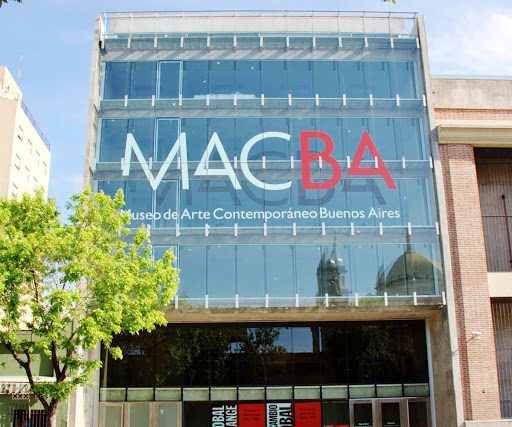
When visiting the MACBA, the contemporary structure of the museum will impress, with its glass structure that makes the interior visible from the outside. Precisely: the MACBA has a distincly contemporary look and feel, unlike, for instance, the Museo de Bellas Artes (which is also featured on this list!)
Address: Avenida San Juan 328
Opening hours: All week from 12 PM to 7 PM; Tuesdays closed.
Website: http://museomacba.org
MALBA Buenos Aires: A Museum With the Best National Art Exhibit
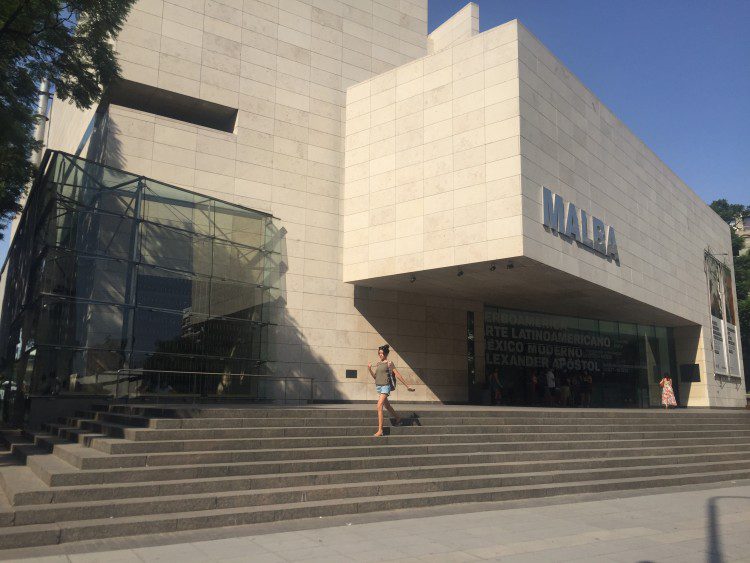
MALBA was constructed in September of 2001 during a harsh economic downturn in Argentina. Despite the economic limitations, the government decided to build MALBA to foster the development and acknowledgment of Latin-American art from the beginning of the 20th century onwards. Furthermore, it was intended to educate locals and visitors about the dynamic and ever evolving culture, history, and diversity that shapes Latin-America.
A quest for Buenos Aires’ finest art is not complete without a trip to MALBA. It boasts an extraordinary collection of modern Latin American art beginning in the early 20th century. It houses many Argentine painters such as Berni and Pettoruti as well as Mexican painter Frida Kahlo.
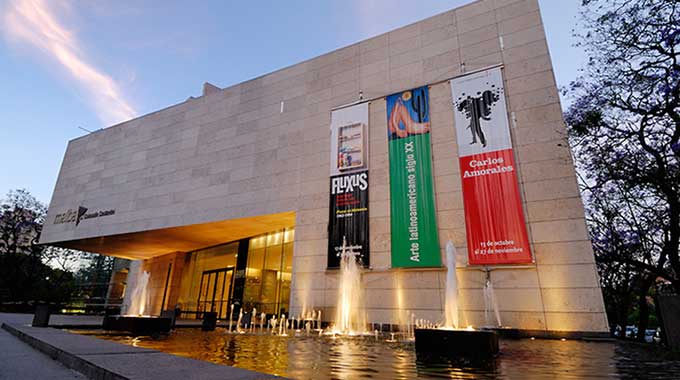
The art that is always displayed in MALBA changes drastically and frequently, perhaps a metaphor for many of the countries in Latin-American. One of the most famous exhibits in the museum is the series of paintings that tells the stories of Juanito Laguna and Ramona. Juanito’s life symbolized what many people experienced when they moved to Buenos Aires in the 19th and early 20th centuries.
Address: Av. Pres. Figueroa Alcorta 3415
Note: Wednesdays are discount days. Also, if you have some sort of student card it is free. Tuesdays closed.
Xul Solar Museum: The World-renowned National Artist
Xul Solar’s art in Buenos Aires consists of sculptures, paintings and architectural work. In his sculptures, he is known for his use of unorthodox materials. One of his most famous pieces, which you will see in the museum, is a brightly-painted piano he modified by adding a third row of keys, and in his own way re-inventing the language of music. He was fascinated with astrology and this is also evident throughout much of the art; In much of his work images of the moon, stars, sun and signs of the zodiac are evident.
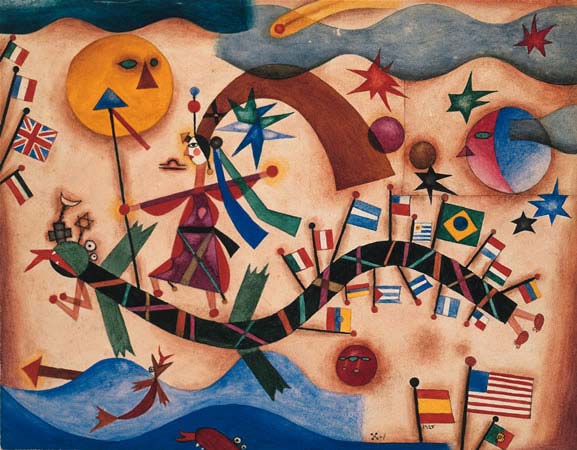
Xul Solar was also an “inventor,” of sorts, but not in the typical way. His game called Panchess or “Panajedrez,” for example, was a complicated version of a chess-like game. He is known for inventing languages, both a universal language designed to unite the world and a language designed to unite South America. The museum itself was originally designed by the artist, and at one time was his home. Not particularly visible from the street, it was completed in surrealist fashion, with a stairway that leads to nowhere and hidden rooms.
Fundación PROA
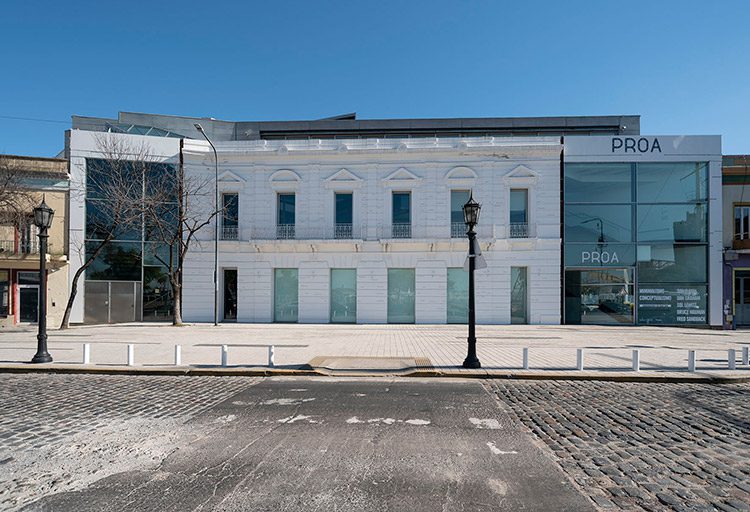
One to tie in with your visit to Usina del Arte is the Fundacion PROA. A beautiful 19th century Italian mansion is home to a frequently changing programme of temporary international exhibitions. When you’ve been and done the El Caminito stretch of La Boca make sure head to Fundacion Proa for a cultural fix. Proa attracts the most innovative artists from within Argentina and from around the World, they have featured an exhibition of famous artists like Ai Weiwei. Full of multimedia installations and quirky art, be sure not to miss the roof terrace from which an impressive view of the shipyard can be seen.
Also read: Museum restaurants
Fundación PROA
Address: Avenida Don Pedro de Mendoza 1929
Opening Hours: All week from 12 PM
Fortabat Museum and Art Collection
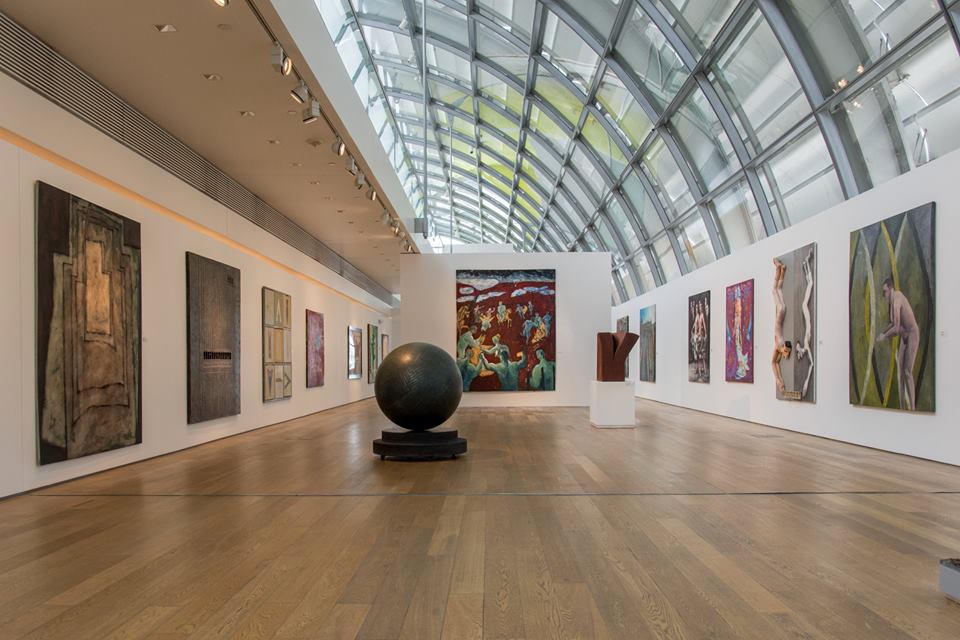
After admiring the the ultra sky high towers that make up Puerto Madero, head along the river side until you reach a glass arc shaped structure that is home to the former private collection of Amalia Lacroze de Fortabat. A former Argentine philanthropist and art collector, Fortabat’s collection is vast and spans from classical art up until the late 20th century. Definitely worth a look at one of Argentina’s most prominent private collections of art. If you time it right, you’ll be able to step out of the museum just as the sun is setting over Puerto Madero, creating a beautiful vista over the river.
Address: Olga Cossettini 141
Opening Hours: Open Tuesdays until Sundays 12-8 PM.
Usina del Arte
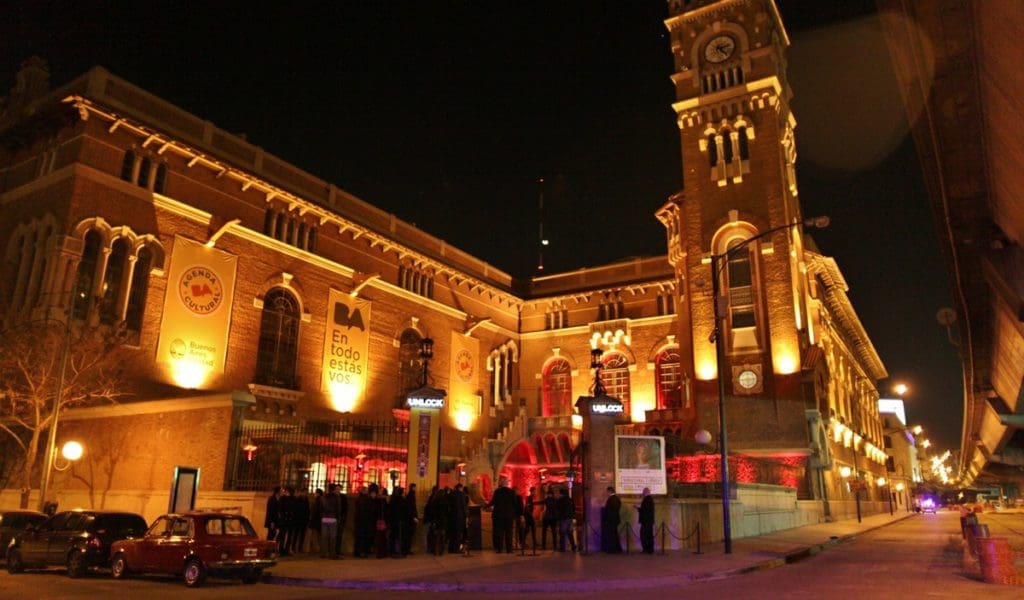
La Usina del Arte used to be 1916 power plant turned cultural space on the edge of La Boca, which has now been recycled by the city Government. Frequent temporary exhibitions and a concert venue mean that is place is a hive of buzzing cultural activity. Right now it is exhibiting Bjork Digital. Despite its slightly less salubrious location on the edge of La Boca, this only adds to its offbeat and hip vibe. Perfectly combined with a look around La Boca’s street art. This is the place to go if you are after really up to the minute art as well as other cultural experiences.
The Usina del Arte is especially known for its music programming, and it’s one of the few activities you can access for free, though beware: demand is extremely high.
Address: Agustín R. Caffarena 1
Opening hours: Tuesdays through Thursdays from 2 PM to 7 PM – Fridays through Sundays from 10 AM to 9 PM




